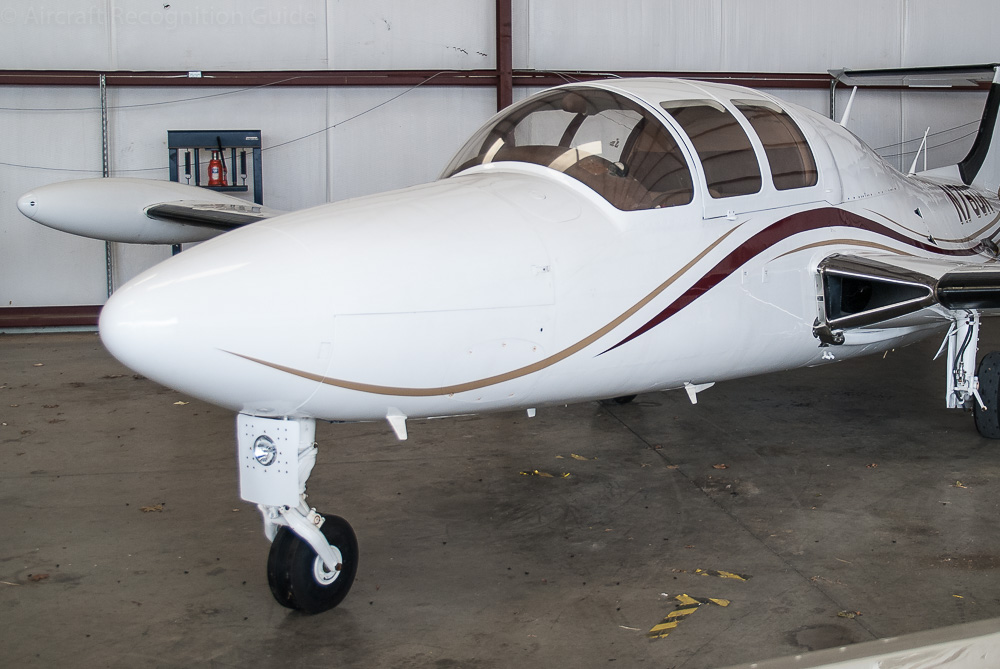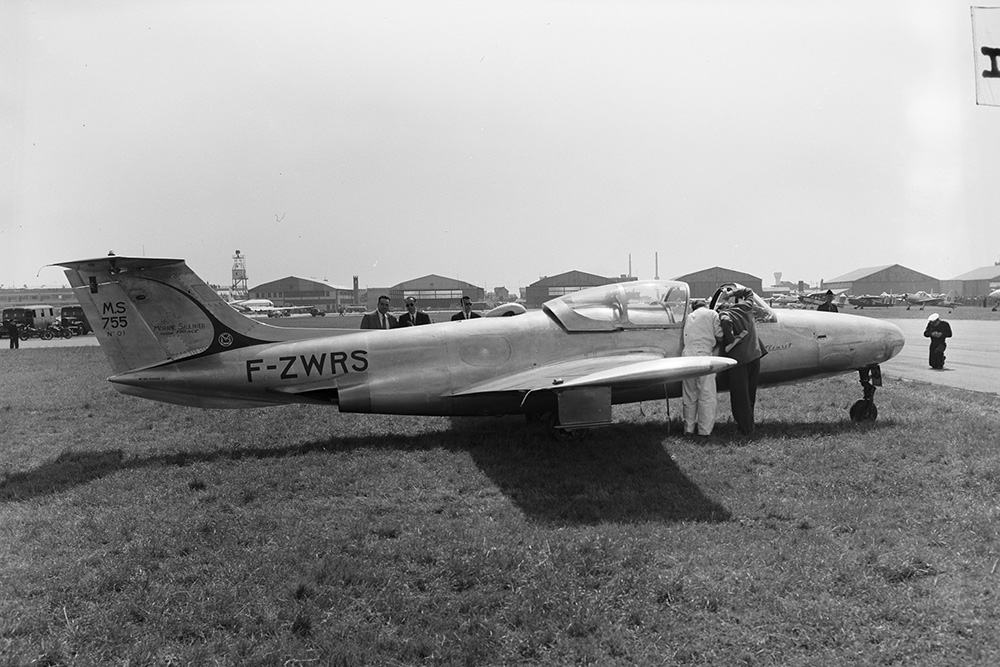
Morane-Saulnier MS755 Fleuret & MS760 Paris
This French jet aircraft can be considered as one of the first business jets, dating from the mid 1950s. Its shape is still quite typical. The aircraft has low mounted straight wings. In the wing roots are triangular shaped air in takes feeding the two jet engines in the rear fuselage with exhausts at the side of the fuselage. At the back is a low T-tail. The cabin has two rows of side-by-side seats under a large glazed canopy. The landing gear has single wheels on all legs. The main gear retracts in the wings, outward.
Different versions
The different versions of the MS755 and MS760 can be recognised by:
- the size and shape of the canopy
- the shape of the cockpit and cabin windows
- the presence of tip tanks
MS755 Fleuret
The origins of the Paris are in this jet trainer that was in competition with the Fouga Magister (but lost). It has the same general characteristics as the Paris, but no tip tanks and a shorter canopy as the MS755 only seats two, side-by-side.
The external appearance of the MS755 Fleuret is already close to that of the MS760, but the canopy is clearly different. (photo: WikiMedia)
MS760 Paris I, MS760A Paris IA/IR, & MS760B Paris II
When the Fleuret appeared to have no future, Morane-Saulnier developed it into a jet liaison aircraft and small (early) business jet, the MS760 Paris. It has a longer forward fuselage seating four persons under a longer canopy. The canopy has large windows, with one front window and two side windows. Most aircraft have tip tanks, but these are optional.
The differences between the three versions are internal, relating to the fuel tanks, exact engine types and bagage comparment. Paris IR is the designation often used from French military Paris I aircraft upgraded to MS760B standard.
The MS760 was built under license in Argentina. The Brazilian military designation was C-41.
The French military MS760s had a canopy with a glass roof, while refurbished aircraft for the civil market may have a covered roof (see photo further up).
MS760C Paris III
As the Paris I/II had a sliding canopy, making getting in and out of the aircraft difficult, Morane-Saulnier developed a version with a normal entry door. This version was the MS760C Paris III. It has a longer cabin, seating six persons. The canopy was replaced by normal cockpit windows and two round cabin windows. The Paris III lacks tip tanks.
The MS760C Paris III looks more like a 'traditional' bizjet than the other versions, thanks to the normal cabin instead of the fighter-like canopy. (photo: Nick Dean)
Confusion possible with
Diamond D-Jet
The Diamond D-Jet has air intakes in the wing roots and a low T-tail, like the MS760. However, the intakes are more oval and narrow and the tail is more a cruciform one with high mounted horizontal stabilisers. Finally, the Diamond aircraft is a single engine aircraft and has winglets. (photo: RuthAS/WikiMedia)
Canadair CL-41 Tutor
This side-by-side jet trainer has air intakes in the wing roots and a low T-tail, like the MS760. However, the intakes are half ovals. Moreover, the Tutor is a single engine aircraft with the exhaust at the rear.
Aero L-29 Delfin
The L-29 is similar to the CL-41 above: it has air intakes in the wing roots, but half ovals, and a low T-tail. Additionally, it is a single engine jet. Finally, the Delfin has a tandem two seat cockpit.
Eclipse 500
Other small private jets are unlikely to form a source of confusion, as they have engines attached to the side of the rear fuselage on pylons. One is the Eclipse 500, that is small, has a true T-tail and tip tanks. The fuselage and gear are significantly different though.









